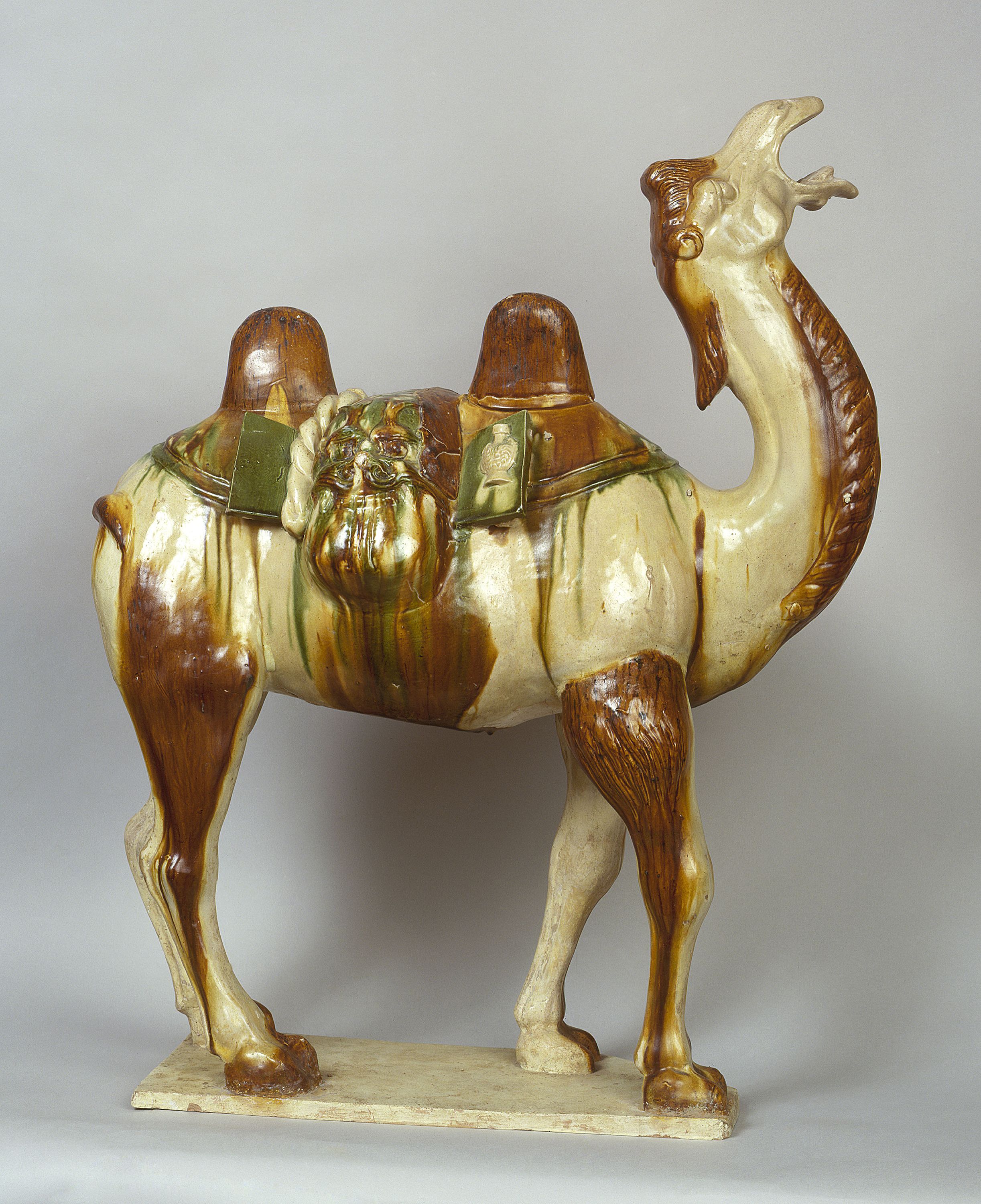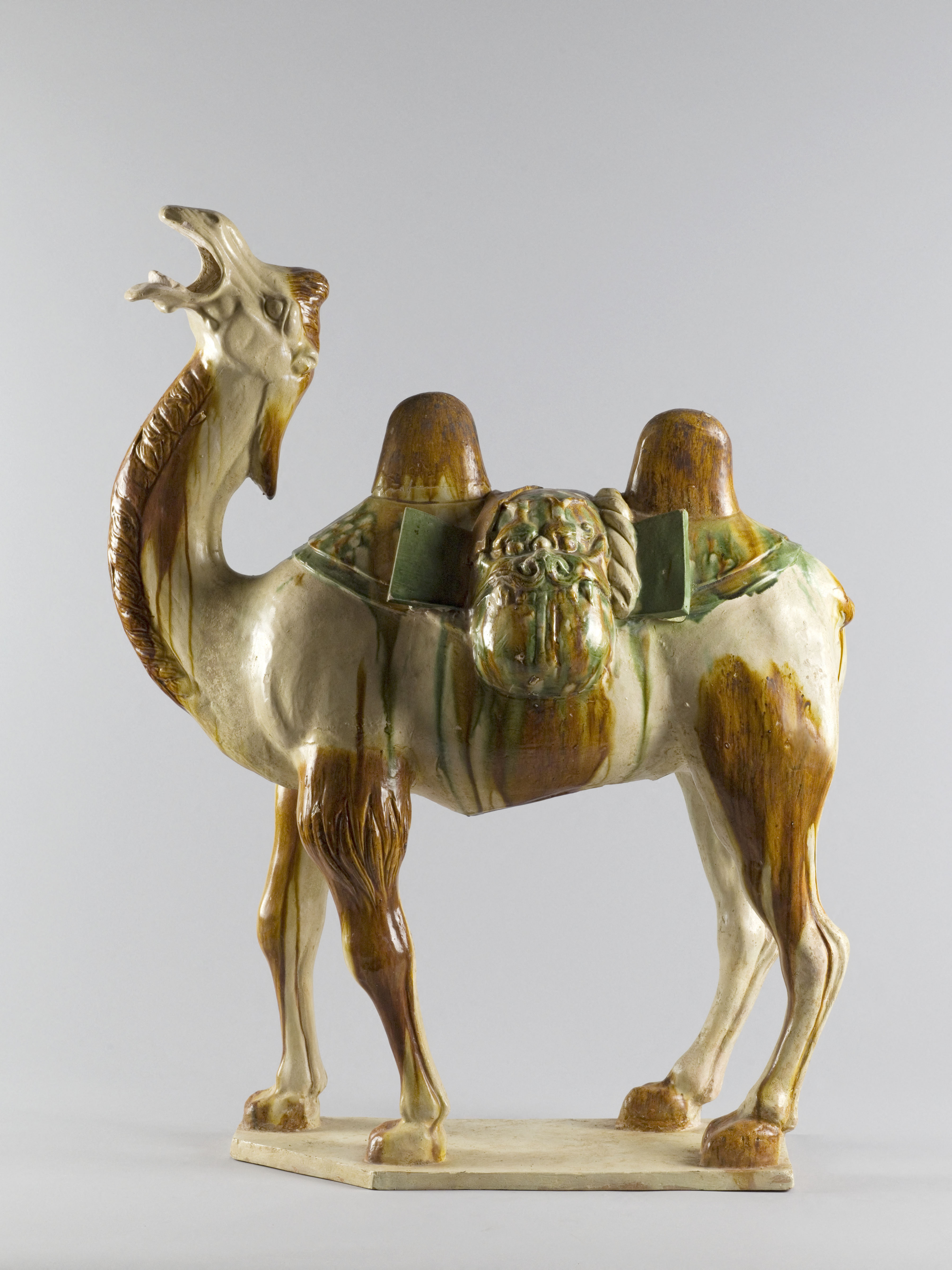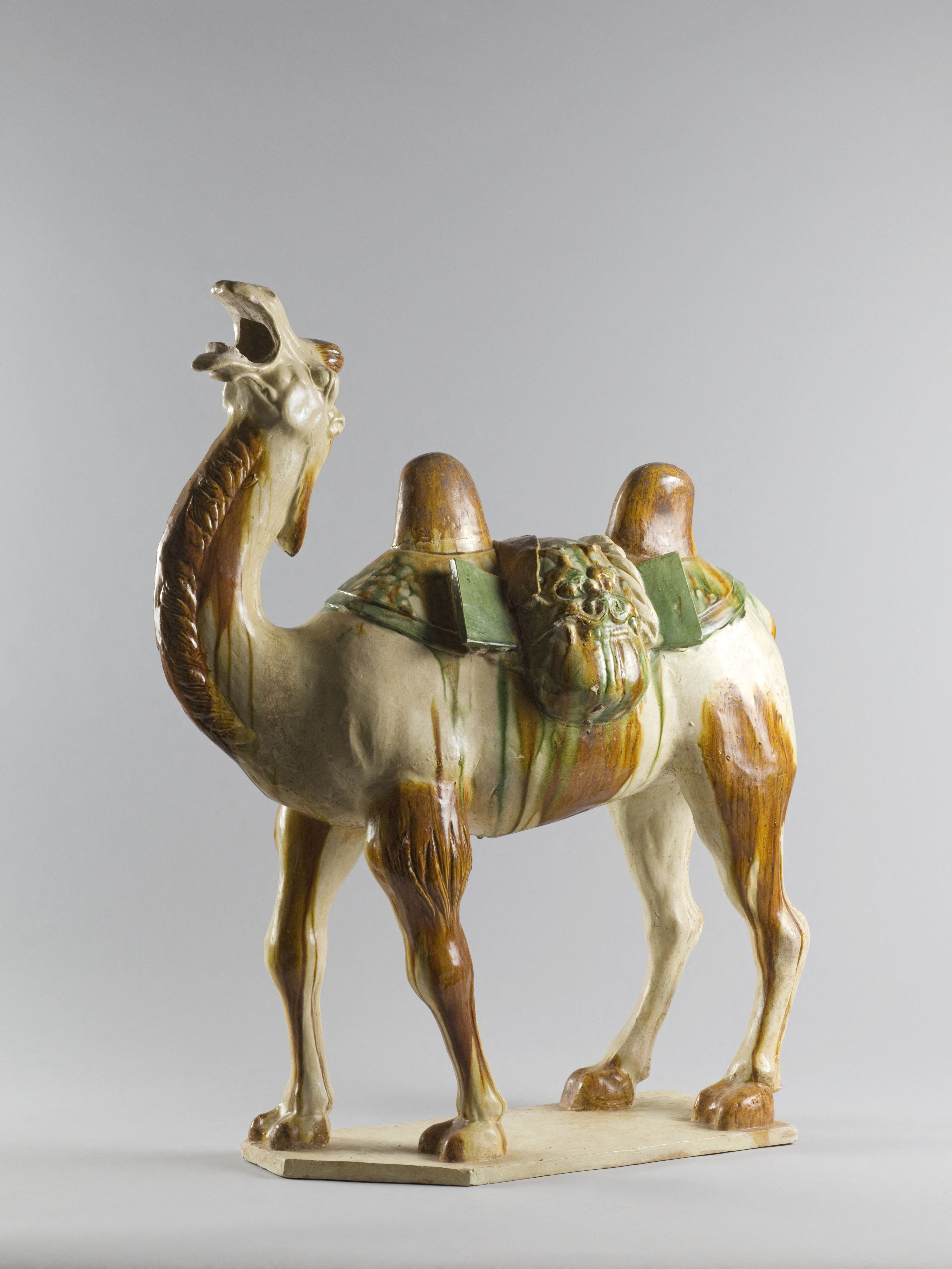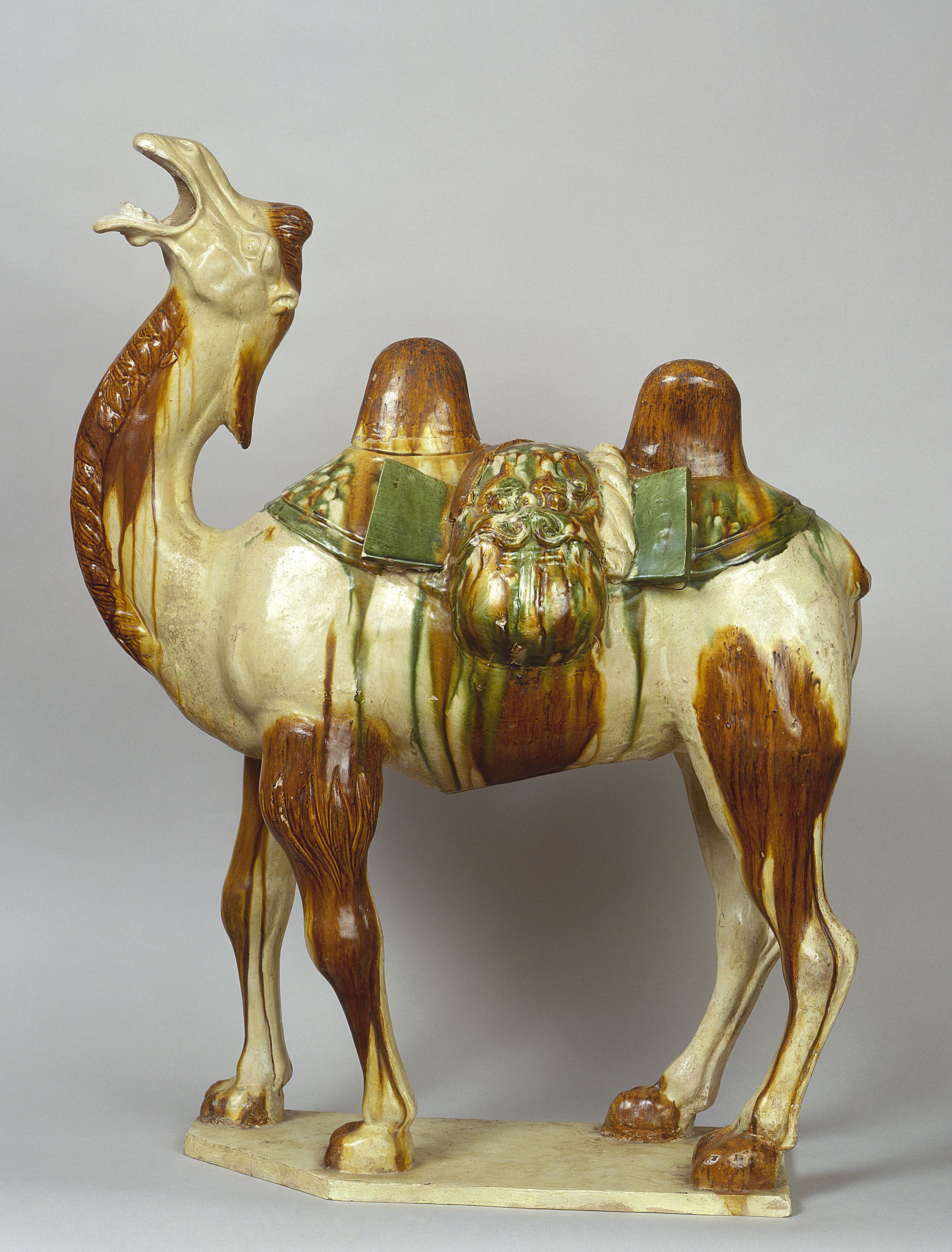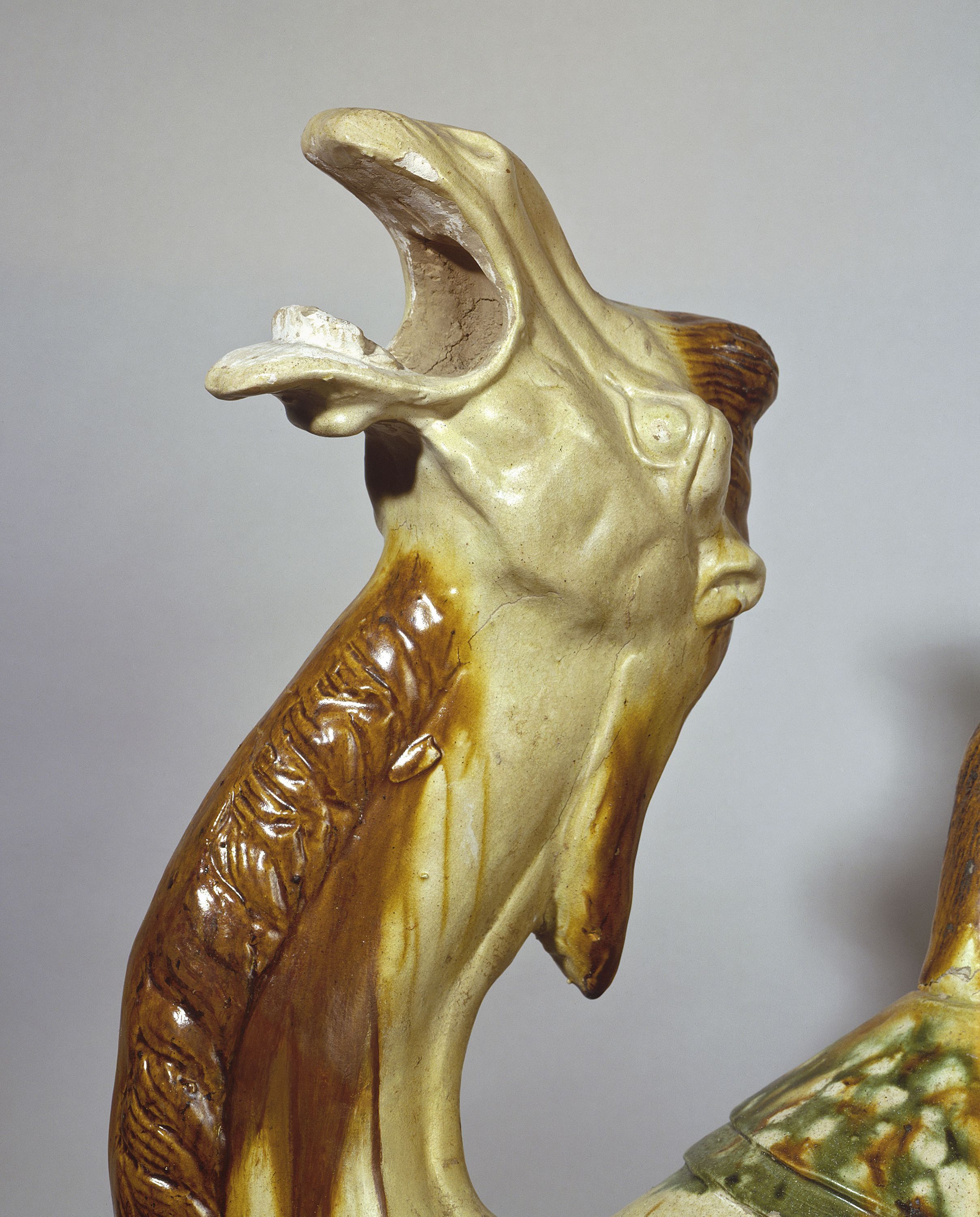
Chameau
Terre cuite, Moulage, Glaçure sancai
Ronde-bosse, Mingqi
Achat
M.C. 2001-10
X-radiographs taken at the Centre de Recherche et de Restauration des Musées de France and thermoluminescent testing have revealed the standard restorations that have been carried out, inevitable with mingqi of this size (replacement of the flat base, partly reconstructed hindlegs, glueing on the neck). But these tests date the oldest parts of this piece to the first half of the 8th century, usually proposed for this type of item that appears to have been produced before the rebellion of General An Lushan (755-763). Most of the world’s major Asian art museums have one or several camels of this kind. The British Museum has a coherent ensemble of impressively sized mingqi sancai from the tomb of Liu Tingxun (died 728), discovered in Luoyang (Henan). Camel statuettes are divided into four main groups: stationary unpacked camels, stationary packed camels, unpacked walking camels and packed walking camels. The Cernuschi Museum specimen is of the last type. Two large casts, originally in leather, featuring a grimacing mask decoration that has been interpreted as serving a funerary function, a twisted rope of spun silk and a flat gourd, an allusion to the nomadic life, are borne on the wide packsaddle. The vigorous movement of the right foreleg, the expression of the raised grunting head, the edge of the saddle blanket, gathered in places or with a simple flat trim, the precise depiction of the hair on the beard and top of the feet all reflect the quality of this piece.
Two masterpieces dominate this group: the camel in the Idemitsu Museum in Tokyo and the one in the Asian Art Museum in San Francisco. The Cernuschi Museum specimen cannot rival these pieces, but it is striking in its vigour, monumentality and vibrant polychrome of cream, brown and green.
Gilles Béguin, Activités du musée Cernuschi, Arts asiatiques, 2002 , t.57, p.175-176.
Gilles Béguin, Le petit peuple des tombes, Paris-Musées, 2010, p.40-41.
